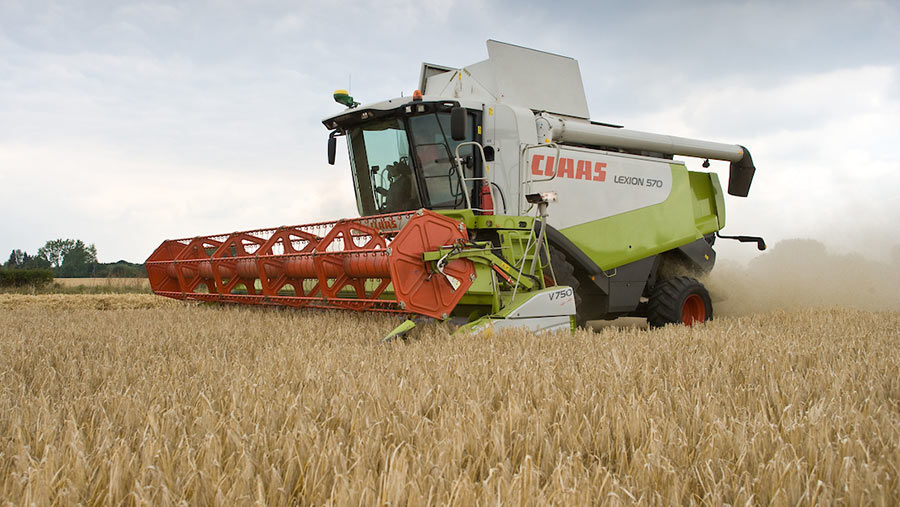Premiums for malting barley set to rise into 2021
 © Tim Scrivener
© Tim Scrivener Malting barley premiums are predicted to nudge higher into the new year, reflecting a recovery from coronavirus lockdowns and a sharp fall in spring barley drillings next year.
Premiums for malting barley over feed barley have slipped to £10-£12/t, hit by a drop in demand from the maltsters and a massive spring barley crop area of more than 1m hectares this year, but they are set to recover.
Jonathan Arnold, trading director at grain merchant Robin Appel, says demand from brewers and distillers for malted barley is set for a return to pre-Covid levels.
“The recovery from Covid could be quite quick, and premiums will be back up in the spring,” he says.
See also: Barley outlook better than feared thanks to fall in sterling
Domestic demand
Mr Arnold points out that the UK is in a very good position, as it has the soil types and maritime climate to grow some of the best malting barley in the world.
“There is a vibrant domestic demand for quality barley for distilling and brewing and, in time, there are serious reasons for optimism,” he adds.
UK maltsters buy about 1.9m tonnes of malting barley annually, but after the pandemic started to bite in March, monthly volumes bought by them were down by one-third.
Jack Watts, agri-food delivery manager at the NFU, says there was a small summer recovery as Covid lockdown restrictions were eased, with maltsters’ demand down only 10-15%, but there was no data yet from the November lockdown.
Spring crop area
Mr Arnold says the AHDB Early Bird survey is a little too optimistic, looking for 767,000ha of spring barley in 2021, down from 1.096m hectares in 2020, and saw an area of 700,000 to 750,000ha. He reports a reduced spring barley area across Europe, except in Denmark.
Although the UK winter barley area is higher this season, the area sown with malting varieties has not risen, he adds.
Prices and premiums will depend heavily on the demand for feed barley, and with 85% of UK feed barley exports going to the European Union, much will depend on a trade deal being agreed with the union by the end of 2020.
Leading variety
The current leading spring barley is the malting variety Laureate. It accounts for 50% of the English and Scottish crop, and is set to stay the number one variety for 2021.
Kathryn Hamlen, technical manager for malting barley at Laureate’s breeder, Syngenta, says the variety was the most used by the maltsters from the 2019 harvest, accounting for 43.1% of malting barley purchases, and is likely to be the number one in 2020 and 2021.
In terms of seed availability for 2021 sowings, Laureate will be the most widely available variety, followed by Planet, Diablo, Propino and Sassy.
Looking ahead, the breeder has two new spring varieties – Tungsten and Splendor – which joined the AHDB Recommended List in December 2019, and they will come up for possible full approval by the maltsters in June 2021.
Tungsten has potential for brewing and distilling, with a Recommended List fungicide-treated yield of 103%, compared with Laureate at 101%, and could be the next variety to partner Laureate to supply both markets.
Splendor has a yield similar to Tungsten at 103% and has potential for brewing to join fellow brewing varieties Planet and Propino.
Mrs Hamlen is “pretty confident” both Tungsten and Splendor will get full approval in June 2021.
Disease resistance scores for the two new varieties are a little lower than Laureate, with both scoring 4s for rhynchosporium. Tungsten scores a 4 for brown rust and Splendor gets 3, compared with Laureate’s 6 for rhynchosporium and 5 for brown rust on a 1-9 scale where 1 is very susceptible and 9 shows good resistance.
All the people quoted were speaking at an annual malting barley webinar on 8 December, organised by Syngenta and Robin Appel.

